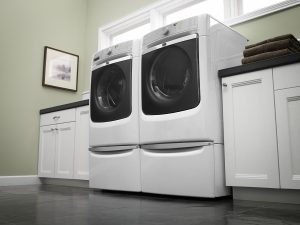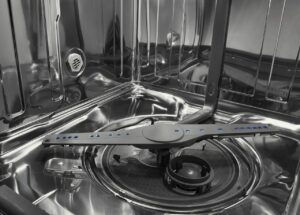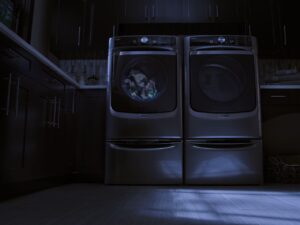Your Guide to Buying a Washer and Dryer

According to research, the average family in America washes 300 laundry loads each year.
So, Washers and dryers are not only big home purchases, but also crucial for keeping your bills under control. The marketplace is packed with offerings, with appliances of all sizes and designs. So, how do you choose the best ones for your home? In this buying guide, we will explore the crucial features to help you avoid paying more for bells and whistles you don’t actually need.
Capacity:
The first thing that you need to consider is the capacity of the appliance. You need to think about how much laundry you do each week. If you need to wash multiple loads each day simply because your washer is too small, it can be frustrating and inefficient. Bear in mind that a larger capacity washer will have a longer cycle time.
So, if you prefer to wash quick, small loads, then a smaller capacity machine would better suit your needs.
The capacity of washers and dryers is measured in the weight of the laundry. Unfortunately, it is a little different for the different machines. While washers measure the dry weight of clothing, dryers refer to the weight of damp laundry. So, if you have a 10 pound capacity washer, all the clothing will not fit in a 10 pound capacity dryer.
Efficiency:
Another consideration is how much water and energy the machine uses. Many homeowners are concerned about their energy bills, so you need to ensure that your washer and dryer use as little water and power as possible while still producing great results.
Fortunately, appliance manufacturers appreciate this. Each appliance has an IWF (Integrated Water Factor) to measure the water efficiency of each model. This is a measure of the gallons the machine uses per cubic foot of capacity per load.
It is also worth looking out for an ENERGY STAR certified machine. These appliances typically use approximately 25 percent less energy and 33 percent less water compared to traditional models.
There are also HE (High Efficiency) models. These washers help to reduce the water and energy necessary for each load. They can use up to 80 percent less water compared to a traditional top loading washer, with 65 percent energy savings. Additionally, they can typically wash more laundry in a single load.
Cycle:
Since a larger load requires a longer cycle time, it is a good idea to look for a model that has variable cycle times. This will help you to conserve energy if you only want to wash a small load or clean an item or two. This can allow you to wash large loads or enjoy a lightning fast cycle, depending on your preferences and requirements.
Size:
You will also need to consider the physical constraints of your laundry room. While you may want to enjoy the energy savings of a HE washer, you may not be able to accommodate it in your laundry area. So, you will need to measure your available space carefully to ensure that your choice of appliance will fit.
Most appliances have a typical depth of 33 inches, but this can vary. Additionally, you’ll need to add six inches for venting and hoses. You should also allow one inch around each side and between the appliances to reduce vibrations and noise. If you choose a top loading washer, you will need approximately 18 inches of clearance above the appliance, so you can open the door fully.
Measure your available space and keep these measurements with you when you’re shopping. You can then compare the models to ensure that the washer and dryer you choose will fit comfortably.
If you’re considering a new washer and dryer, you can explore your options with our online laundry collection. If you need additional guidance, you can rely on our home appliance specialists to provide help.
- Choosing Between a Plastic and a Stainless Steel Dishwasher Tub
- Steam Dryers: Efficient, Gentle, and Wrinkle-Free Laundry Solution
- Benefits of a Smart Washing Machine
- Beverage Stations: Elevating Your Kitchen with the Latest Trend
- New Ways to Design Your Kitchen in 2024
- Should You Choose a Column Refrigerator?
- The Benefits of an Outdoor Pizza Oven
- Should You Choose a Freestanding or Slide-In Range?
- Understanding Microwave Wattage
- Standard or Pro Ranges: Which One is Best for Your Home?






